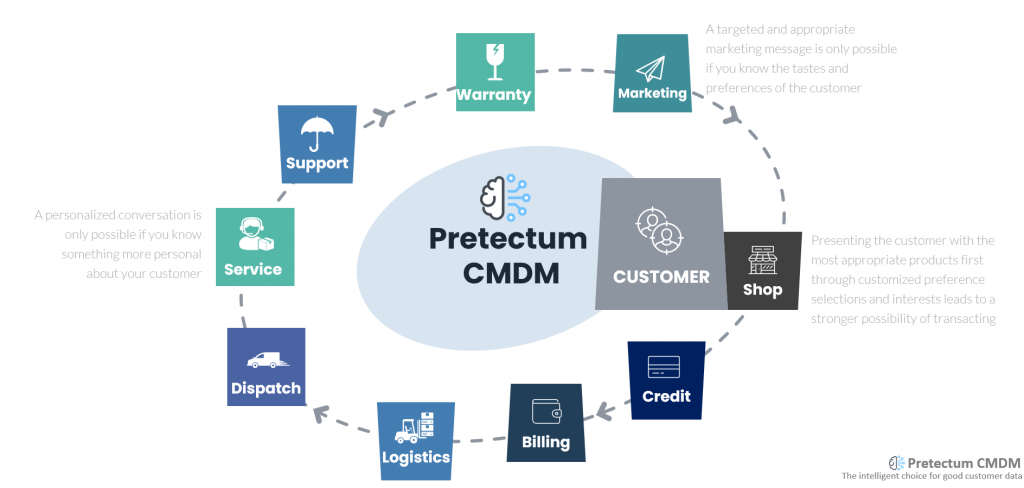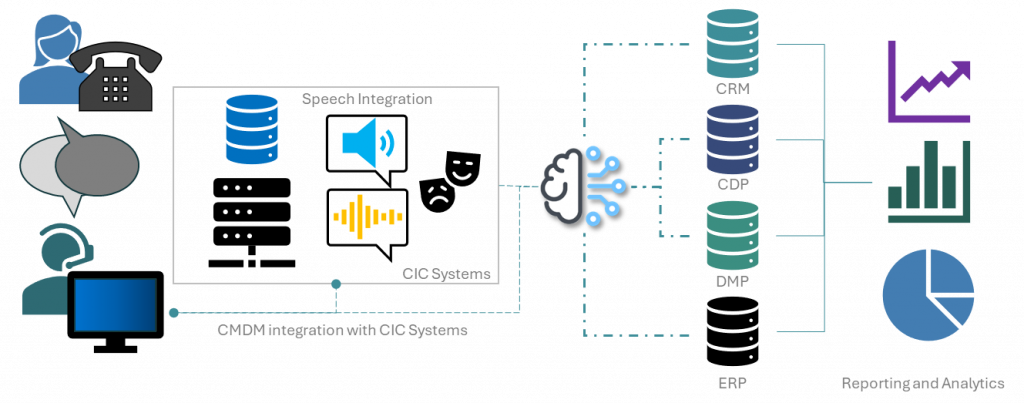At the start of the year the world of customer experience (CX) was viewed as undergoing a significant transformation, driven by advancements in technology and evolving consumer expectations.
These included the continuing rise of artificial intelligence (AI) and extended to the increasing importance of social responsibility. Trends shape the way businesses interact with customers and since we’re two thirds of the way through 2024 it is worth reflecting on how things are progressing relative to predictions.
AI-Driven Personalization
AI was expected to enable businesses to create highly targeted and effective interactions. The most successful campaigns were expected to leverage AI to analyze customer behaviors and preferences and in turn offer tailored recommendations that resonate with individual users. This level of personalization would be a game-changer, allowing brands to stand out in a crowded market and build stronger, more loyal relationships with their customers. 89% of those engaged in the craft per Segment, believed AI-driven personalization are critical to success but the qualifier is that they expected it to take several years to materialize.
AI was expected to be at the forefront of enhancing customer experiences in 2024 however task automation, campaign optimization, and delivering personalized content has never really been off the agenda.
Revenue Growth: AI-driven personalization was expected to increase sales by as much as 15% through analysis of consumer behavior and would lead to tailored content and recommendations.
Consumer Goods: Gartner predicted that consumer goods companies would leverage AI and generative AI (GenAI) to transform operations, that they would focus on personalized products and improved customer experiences
Digital Marketing: Hyper-personalization, the combining of data from multiple sources and which would include behavioral, demographic, and transactional information, is not new but it was thought that innovative uses leveraging AI might drive some new revelations.
E-commerce: AI-driven product recommendations and custom content were expected to become mainstream.

The Pretectum CMDM perspective is that a couple of factors continue to hold organizations back. The first of these is the inherent data quality issues with customer data, this remains a burden for many organizations and without a strong data curation and management approach, DQ will continue to impair the efficiency and effectiveness of AI algorithms.
The second influencing factor is one of trust. While in the lab, the AI, ML and LLM algorithms may appear to do what is expected of them, in the wild, they likely behave a little differently and synthetic and simulated data don’t line up with the harsh realities of many organizational contexts particularly with the edge cases of customer data’s reality.
As a result executives are understandably leery about committing to high levels of AI dependency that would suggest themselves to be game-changers. Add to this, the general anxiety of the general public with respect to privacy and the inappropriate use of personally Identifiable data (PII), algorithms running amok, and you’re facing a legitimate concern about whether the use of AI with personal consumer data is morally and ethically acceptable to consumer audiences.
The final point on all of this is the cost-to-serve. There is supposedly good evidence showing a healthy return on investment (ROI) for AI-driven personalization but the value to cost ratios still seem to suggest that AI, ML and LLM enhanced data is expensive to manage with only a marginal addition to the overall value of the data.
Retail and E-commerce: Amazon and Netflix have reported increases in sales and customer retention due to personalized recommendations. Amazon’s recommendation engine is estimated to generate 35% of its total sales but has been around since the 1990s with ML incorporation in the 2010s and makes use of ML leveraging past behaviours, NLP to process feedback and deep learning in order to perform pattern building. Reputedly, “Netflix subscribers now choose 80% of the movies the merchandising system recommends, up from 2%- 20 years ago”
Customer Service: AI-driven chatbots and virtual assistants have reduced customer service costs by up to 30% while improving customer satisfaction. Companies like H&M and Bank of America have successfully implemented AI to handle customer inquiries more efficiently. Sephora’s AI-powered chatbots also provide personalized beauty advice and product recommendations.
BofA’s virtual assistant, Erica, uses AI to provide personalized financial advice, help with transactions, and answer customer queries. As of April 2024, Erica had surpassed 2 billion interactions, assisting over 42 million clients. It handles around 2 million interactions per day, providing personalized financial insights and assistance. Use of chat bots of course drives down costs by being available 24×7 and more generally meets the needs of most customers who prefer self-service over having to deal with a person. BofA claim 98% of clients get the answers they need from Erica within 44 seconds.
Fraud Detection: Banks and various financial institutions have long used algorithms to try to detect fraud detection, this continues to this day. The 2024 Anti-Fraud Technology Benchmarking Report, a global research study initiated by the Association of Certified Fraud Examiners (ACFE) and SAS provides insights from nearly 1,200 ACFE members surveyed in late 2023.
AI and ML adoption was observed to still consistently lag behind expectations. Adoption for fraud detection and prevention has grown only 5% since 2019, far short of the anticipated adoption rates revealed in the 2019 and 2022 studies (25% and 26%, respectively)
So the jury is still somewhat out on solid proof of benefits and effectiveness and worthwhile returns on investment. It is likely that there are strong proving grounds that are not necessarily being publicly talked about but at the same time, it is clear that some businesses have grown disillusioned by the cost benefit assessment results and have all but abandoned some programs. Fears about compromises on respecting consumer privacy notwithstanding.

Omnichannel Self Service Support
Despite the mixed results, at Pretectum we remain convinced that the ability to providing consistent and seamless experiences across multiple platforms remains a necessity.
Customers in all industry segments expect consistent, high-quality interactions whether they engage through phone, in-person, via the web, mobile, or social media.
In order for organizations To meet this demand, they need to invest in integrated systems. They need to support real-time data updates and a unified customer view. The omnichannel approach ensures that customers receive the same level of service and information regardless of the channel they choose to interact with.
This omnichannel support of course has real-time support and self-service in particular, as key aspects. Customers’ expect immediate assistance and this will continue to rise, the only way to service this, is by proving self-service options. Companies will need to invest in robust self-service tools that empower customers to resolve issues independently, while also providing real-time support when needed.
The hybrid approach allows businesses to balance efficiency and personalization, ensuring that customers receive the level of support they require without overburdening customer service teams. To achieve this effectively there need to be clear and categorical customer identification and verification capabilities combined with consent management and authorizations.

The Human connection
While technology will play a crucial role in enhancing customer experiences well into the future, the importance of human agents with emotional intelligence will remain vital. The most effective execution of this is one where the agents are empowered with access to appropriate customer information and insights.
Companies need to foster environments where agent and employee representative empathy can thrive, enabling customer service agents to provide genuine, compassionate support. In complex scenarios or when customers require a more personal touch, the ability of human agents to understand and respond to emotional cues will be invaluable in building trust and loyalty and while technology and information and insights can be helpful with data and prompts, in the end the human touch, style and connection sets people apart from machines.
Capturing the interactions through voice recording transcripts with accompanying sentiment analysis etc will help to inform and train personnel. Organizations that continue to invest heavily in their front line people together with contemporary supportive technology innovations will almost certainly remain well ahead of their competitors.

Customer-Centric Strategies
Understanding customer needs and behaviors through in-depth research will continue to be essential for success for the remainder of 2024 into 2025 and beyond. Marketers will need to craft compelling narratives and differentiate their product messaging through targeted branding that resonates with the ideal customer profile. Placing the customer at the center of messaging strategies, businesses can create content and experiences that truly connect with their audience and stand out in a potentially very crowded marketplace.
Businesses will also need to shift away from superficial metrics like low value one-off customer engagements and transactions, website traffic, social media likes and shares, focusing instead on metrics that reflect true business impact. This includes adopting experiment-driven approaches to measure real value stream program effectiveness accurately. Thereby ensuring strategies align with customer profitability goals and customer lifetime value.
Moving beyond vanity metrics, businesses care able to take data-driven decisions that optimize marketing spend, delivering much more tangible results. Bringing solid data management metrics and KPIs together with factors that influence and drive marketing campaigns and decisions, is essential and Customer Master Data Management (CMDM) solution can be very impactful in this area with high quality deduplicated data that is supported with self-service customer verification, contactability assurance and consent.

Embracing the Future of CX and Customer Master Data Management
As we look ahead to 2024, it’s clear that the customer experience and CMDM landscape will continue to evolve rapidly. Businesses that embrace these trends and adapt their strategies accordingly will be well-positioned to thrive in the coming year and beyond.
By leveraging AI for personalization, streamlining operations, and prioritizing customer-centric approaches, brands can create experiences that truly resonate with customers. At the same time, maintaining a focus on data privacy, empathy, and social responsibility will be crucial for building trust and loyalty in an increasingly competitive market.
As the world of customer experience and CMDM continues to transform, it’s essential for businesses to stay agile, innovative, and focused on the needs of their customers. By embracing these trends and putting the customer at the heart of their strategies, brands can create experiences that not only meet but exceed expectations in 2024 and beyond.
Contact us to learn more.


